The Centre. The Path. The Field of Action.
Kristinehamn (SE) – Runner-up
TEAM DATA
Team Representative: Alexandru Marian Cozma (RO) – architect; Associate: Oana Simionescu (RO) – architect
Collaborators: Roxana Patrulescu (RO) – architect; Zsolt Gondos (RO), Andra Oana Juganaru (RO), Simona Bianca Ruxanda (RO) – students in architecture
Alexandru Cozma, str. Mureș 133B, 300778 Timișoara – România
+40 742 075797 – alex.cozma@f-o-r.ro – www.f-o-r.ro
See the complete listing of portraits here
See the site page here

INTERVIEW
1. How did you form the team for the competition?
We (Alex Cozma and Oana Simionescu) started the group F O R three years ago, working on different competitions and small projects. All the people we have been working with since then are either former students or colleagues from the Faculty of Architecture here in Timișoara –where we both studied and are currently teaching. Whenever we start a new competition we build a new team, by inviting people to join in.
2. How do you define the main issue of your project, insisting on how you answered on this session main topic: adaptability and urban rhythms?
Using the landscape as a unified background we propose a demarcation that attributes a beginning and an end to the place. Orientation and morphology refer to the existing landscapes, space, structures and networks.
Aware of what is already there, we densify existing textures and accentuate through new soft proposals the limits and character of the site. We propose a system of activation, with minimal built interventions, and a series of operative voids, places for action where we left space for natural growth and development.
The loop is the most important part of the project – its exterior is completely adapted to the urban context, generating both hard and soft delimitation; the path of the loop itself is a connector, a continuous tribute to time, hence its morphology, and a dynamic structure that explains the centre and evolution of Kristinehamn; the inside, the centre of the loop, is a field of action, in which one manifests freely as the moment dictates.
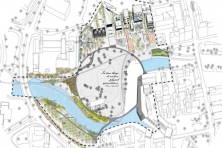
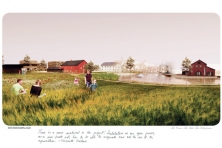
3. How did this issue and the questions raised by the site mutation meet?
The parameter of mutability must be integrated early in the project to allow a large flexibility in the evolution and the needs of the constantly changing neighbourhood.
The main problem of the site was its lack of demarcation.
The project is but a framework – one that connects to the context, thus creating delimitation but within which we left a lot of room for further mutation and negotiation. The main purpose of all the voids and connections proposed is that of being conquered and defined together with the community, in time.

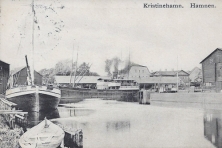

4. Have you already treated this issue previously and could you present some reference projects that inspired yours?
In Romania, due to lack of financial wisdom or political consistency, every urban project keeps on being adapted. So we are always considering time in our projects and try to build further “mutation” strategies whenever we can.
As a reference for this project I would like to mention Dogma's discourse on the line and delimitation, Jan Soucek's illustration "The Bridge" and the way Norberg-Schulz contextualizes it, and Tempelhof with its infinite paths of action. Images of local artwork also inspired us a lot, and helped us understand how the local community might relate to activism, time and open space.

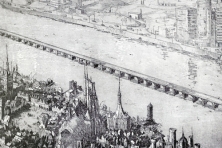
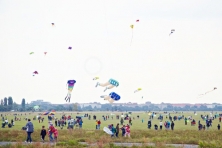
5. Today –within the era of an economic crisis and sustainability– the urban-architectural project should reconsider its production method in time; how did you integrate this issue in your project?
By proposing a framework that connects to the city we assured the starting point and a solid base for the future growth of the place. The project becomes real through the negotiation of its content in time. This should make it sensitive to both built context and community in the present – whenever present is taking place.
We allocated a lot of space to self-organization and we hope that by allowing people to curate their own urban actions, in time, a much more sustainable urban space might be defined.
6. Is it the first time you have been awarded a prize at Europan? How could this help you in your professional career?
Yes, this is the first time we have been awarded a prize at Europan. Considering the scale of this competition and the way it was built over time, we believe that this award is a voice that certifies our abilities to operate within contemporary urban contexts. We intend to use this as a future networking tool and gain access to places and people we could not reach beforehand.